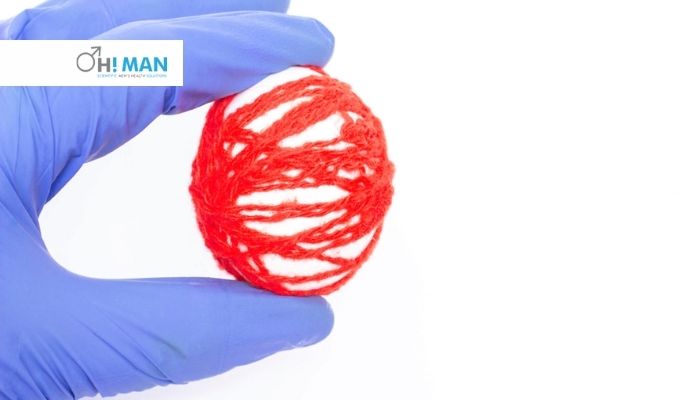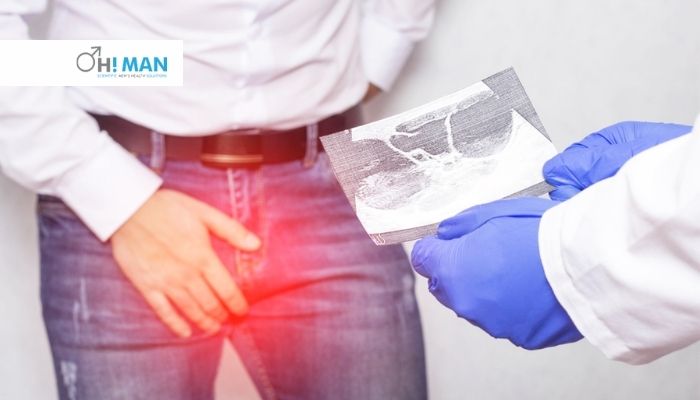What is Hydrocele in Men? Causes, Symptoms and Treatment
What is Hydrocele in Men? Causes, Symptoms and Treatment

Hydrocele is a type of scrotal swelling that occurs when fluid fills the surrounding films of testicles. It is not a severe health issue, but you can feel discomfort and pain due to hydrocele in your daily life. It is a more prevalent condition in babies than in adults, and various effective treatment Methods are available to treat it.
How Common is a Hydrocele?
Around 10% of newborns suffer from hydrocele, which goes on its own in the first few years of their life. In addition, hydrocele occurs in only 1% of adult men worldwide. However, these numbers may vary due to tactical injuries, torsion, or infections like epididymitis.
Let’s find out the symptoms, causes, and treatment of hydrocele so that you can create a better depth of the topic.
Table of Contents
Who is at Risk of a Hydrocele?
Babies born in premature conditions have a higher risk of getting hydrocele. In adults, a man suffering from testicle injuries, testicle torsion infections like epididymitis, and sexually transmitted diseases increase the risk of a man getting hydrocele.
Hydrocele Symptoms & Different Types
The majority of the time, hydroceles are painless. Moreover, the most common hydrocele symptoms include a swollen scrotum.
There could be a sense of fullness in the scrotum or scrotum swelling in adult males. In certain circumstances, the edema may be worse during the mornings than in the evening, and Additionally, it is typically not too painful.
When you or your kid has abrupt or intense discomfort in the scrotum, seek medical attention. However, this can be a symptom of a disorder known as testicular torsion. Additionally, the torsion of the testicles happens when they twist due to an accident or injury or varicocele and causes testicular pain.
Although testicular torsion is uncommon, it is a medical problem that can result in a restricted blood flow to the testicles. Moreover, it will lead to infertility if it goes untreated.

Types of Hydrocele
There are 2 types of Hydroceles: communicative and noncommunicating.
Noncommunicating
When the inguinal ring shuts in babies, the fluid stays in the testicular membrane, resulting in hydroceles. In a year, the body normally absorbs the fluid.
Communicating
The inguinal ring is rarely left open, enabling fluid to move back and forth between the belly and the testicular membrane. This is a communicative hydrocele by doctors. The magnitude of a person’s scrotal enlargement might vary based on their activity level and the volume of fluid present.
Inguinal hernias are frequently linked with communicating hydroceles.
Causes of Hydrocele in Men
The age of a person determines the hydrocele causes.
In infants,
The testicles advance close to the kidneys in the belly as a male fetus grows during pregnancy. They return to their standard scrotal location after an entire pregnancy.
A muscular lining in the scrotum (the inguinal ring) relaxes to let the testicles drop, producing a canal or pouch.
The inguinal ring collapses once the testicles have returned to their usual location. Fluid can travel from the stomach to the scrotum via this channel if the ring remains open or reopens, causing hydroceles.
When a baby is born before the testicles have lowered, developing hydrocele increases.
Hydrocele in Adults,
An interacting hydrocele can develop in adult males if the inguinal ring has not closed or has reopened.
There are different causes of hydroceles in adult males, such as:
- inflammation
- infection
- injury
A hydrocele is uncommon to be painful, but it can induce a fullness in the scrotum or scrotum swelling that is unpleasant.
A hydrocele is rarely harmful and does not affect fertility, and it could be linked to an actual testicular problem like an inflammation, tumor, or inguinal hernia in rare cases.
For finding out other symptoms or causes, individuals should seek a clinical opinion.
When to See a Doctor?
It is best to seek a doctor’s advice after consulting a doctor if your baby is suffering from hydrocele to find and eliminate any underlying health conditions. However, if an adult male feels severe pain or discomfort due to hydrocele, it’s time to visit the hospital for advice. This pain in the testicle can be caused by some testicular torsion, leading to male infertility if left untreated.
Hydrocele Diagnosis
The doctor will carry out a physical examination for diagnosing the hydrocele. Generally, you will experience no pain when you have it. But, there is swelling in the scrotum. Through the fluid-filled sac, your physician won’t be able to diagnose your testicle well enough.
Your physician may examine the scrotum for soreness and put a light through it. Transillumination is the term for this. It enables your physician to assess whether or not there is fluid in your scrotum. The scrotum will permit light to pass through if there is a presence of fluid.
Additionally, the swelling scrotum will seem to light up because the light passes through. The light will not penetrate through the scrotum if the enlargement is because of a solid mass (cancer). Although this examination does not provide a definitive diagnosis, it can be highly beneficial.
Your physician could also exert pressure on your belly to assess for a condition known as an inguinal hernia; they could also ask you to cough or clamp down to do so. This can happen when a weak spot in the stomach wall allows a portion of the small intestine to extend through the groin. A doctor might recommend surgery for repairing it, even if it isn’t typically life-threatening.
To check for infections, they could collect a blood or urine specimen. Your doctor may conduct an ultrasound to look for hernias, tumors, or other reasons for scrotal edema, but this is a rare occurrence.

Hydrocele Treatment
If your new baby has a hydrocele, it will most likely disappear within a year. If your child’s hydrocele does not go away or develops too large, a urologist may need to operate.
Surgery is essential if a hydrocele induces discomfort or is a communicative hydrocele that can develop to hernias.
Hydrocele Surgery
Anesthesia is used to undertake surgical removal of a hydrocele. You can return home within several hours of surgery in most circumstances.
The hydrocele is surgically removed through a tiny cut in the belly or scrotum. This depends on the region of the hydrocele. A big dressing would most likely be applied to the area of your incision by your surgeon. A drainage tube may be essential for a few days, depending on the placement and size.
The following are some of the risks with this procedure:
- scrotal injury, involving nerve damage
- infection
- clots or heavy bleeding
After the procedure, ice packs, a scrotum supporting band with plenty of relaxation will help you feel better. Since a hydrocele can recur, the doctor will most likely consider a follow-up examination.
Needle aspiration
Another hydrocele treatment is to use a long needle to remove it. To remove the fluid, a needle is placed into the sac. The doctor may administer a medication to inhibit the sac from expanding again in some circumstances. On males at a high risk of problems during the procedure, needle aspiration is routinely in use.
The possible side effects of needle aspiration include transient scrotal discomfort and infection risk.
Things To Take Care After Surgery
If you have surgery, the pain might subside within a week. If you believe it is essential, your doctor may recommend pain medication. You won’t be able to resume routine activities for the next few weeks. For at least three weeks, prevent anything that requires straddling, such as riding a bike. Also, during that period, avoid further vigorous activity.
Home Remedies To Ease Pain
After the procedure, ice packs, a scrotum supporting band with plenty of relaxation will help you feel better as a part of hydrocele home treatment. Since hydroceles can reoccur, the doctor will likely consider a follow-up examination.
Stitches at the incision site normally dissolve within their own after some weeks, but your physician may need to examine them. You can avoid this by keeping the region clean with showers or sponge washes. Additionally, physical activity is just as vital as eating a well-balanced diet.
After consulting with your doctor, you may include exercise in your hydrocele home treatment regimen.
Bottom Line
In both babies and adults, most hydroceles go away without medical assistance, and doctors may need surgery or extraction to empty the fluid in rare circumstances.
Additionally, the treatment will rely on the size of the swelling. However, never ignore any discomfort in your scrotum region and seek medical assistance. Ohman is one stop place for all men sexual health issues take a online advice from our experts and buy the FDA approved sexual health medicines for premature ejaculation, erectile dysfunction medicine and Penis enlargement medicines online.
Frequently Asked Questions about Hydrocele
- What causes hydrocele in adults?
Ans- A hydrocele in adults can form due to a scrotal injury or infection. Infections in the testicle or in the epididymitis lead to inflammation. - What is the best treatment for hydrocele?
Ans- Surgery is the best treatment for hydrocele to eliminate large and unpleasant hydroceles may be best for certain people. Another therapeutic option is to use needle extraction to eliminate the hydrocele. - What happens if the hydrocele is not treated?
Ans- An inguinal hernia can develop if a communicating hydrocele will not go off on its own and doesn’t receive medical treatment. - Will hydrocele go away by itself?
Ans- A hydrocele usually disappears on its own after six to twelve months. If it doesn’t heal on its own, surgical treatment is required to avoid further difficulties.



